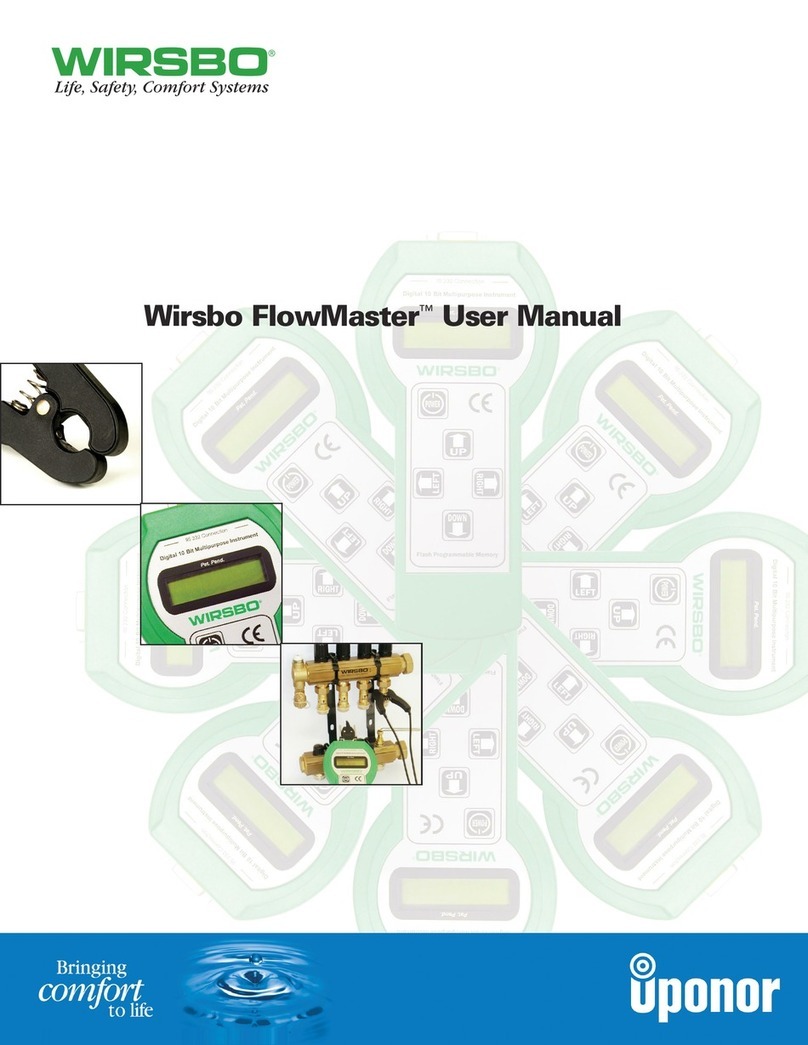1
INTRODUCTION
INTRODUCTION - Table of Contents
IMPORTANT NOTE:
If you are not familiar with how
the Wirsbo proMIX 101 operates,
or the theory behind settings for a
radiant system it is important you
review the Control Function
Overview. It will help with
understanding the functions of
the control within the hydronic
radiant heating system.
Quick Guide
If you are only INSTALLING
the proMIX 101 go to:
INSTALLATION
Steps 1-8
If you are only PROGRAMMING
the proMIX 101 go to:
PROGRAMMING
Steps 1-2
TABLE OF CONTENTS
INTRODUCTION
Control Overview .................................................................. 2-3
Navigating the Control ........................................................ 4-5
Viewing the Status of the System Performance................ 6
INSTALLATION
Step 1 – Checking Contents .................................................. 8
Step 2 – Control Base ........................................................ 9-11
Step 3 – Rough-In Wiring...................................................... 12
Step 4 – Attaching the Control to the Base ...................... 13
Step 5 – Mounting the Sensors .................................... 14-15
Step 6 – Electrical Connections to the Control............ 16-19
Powered Input Connection ............................ 16
Output Connections ........................................ 17
Sensor and Unpowered Connections.......... 18
Temperature Resistance Chart ...................... 19
Step 7 – Testing the Wiring ............................................ 20-22
Test the Sensors .............................................. 20
Test the Power Supply .................................... 21
Test the Powered Demand Inputs ................ 21
Test the Outputs .............................................. 22
Step 8 – Completing the Installation .................................. 23
PROGRAMMING
Step 1 – Programming the Control .............................. 25-30
Programming the "Adjust" Menu............ 26-30
Reset Mode ............................................ 26-28
Setpoint Mode ...................................... 29-30
Step 2 – Test Sequence ........................................................ 31
CONTROL FUNCTION OVERVIEW
Section A – General.......................................................... 33-36
Section B – Mixing Zones................................................ 37-39
Section C – Troubleshooting .......................................... 40-42
APPENDIX
IproMIX 101 Menu Tree.............................................. 44-45
II Application Drawings ................................................ 46-49
III Error Message Overview .......................................... 50-51
IV proMIX 101 Program Setup .......................................... 52




























